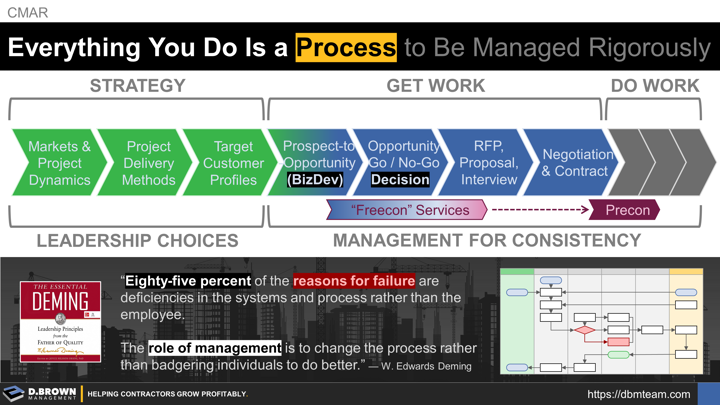"Eighty-five percent of the reasons for failure are deficiencies in the systems and process rather than the employee. The role of management is to change the process rather than badgering the individuals to do better." - W. Edwards Deming
Successfully winning CM-at-Risk projects for the right fee and risk levels is no different.
You can separate these processes into two major parts:
- Strategic choices made by leadership starting with the contractor's board or owners, CEO/President, and their executive leadership team.
- Management for consistency of execution throughout all stages of the Project Value Stream (PVS) and Critical Supporting Operations (CSO) from business development through project exit.
Strategic Leadership Choices Include:
- Market Sectors & Geographies
- Project Types, Scopes, and Dynamics
- Project Delivery Methods
- Target Customer Profiles
These choices form the framework against which most downstream management processes and decisions are evaluated including:
- Prospect-to-Opportunity (Business Development starting with the Early Game)
- Opportunity Go/No-Go (Decision including how much to invest in "Freecon" Services along the way)
- RFP (Request for Proposal) Response or proposal and getting to the next step
- The interview
- Negotiations
- Contract
After that, you have to build the work and repeat with one more great project on your resumé.
An experienced but unbiased 3rd party can be invaluable for helping you and your team evaluate your entire process from end-to-end. Please contact us to learn more about our approach to evaluation and roadmap development.

